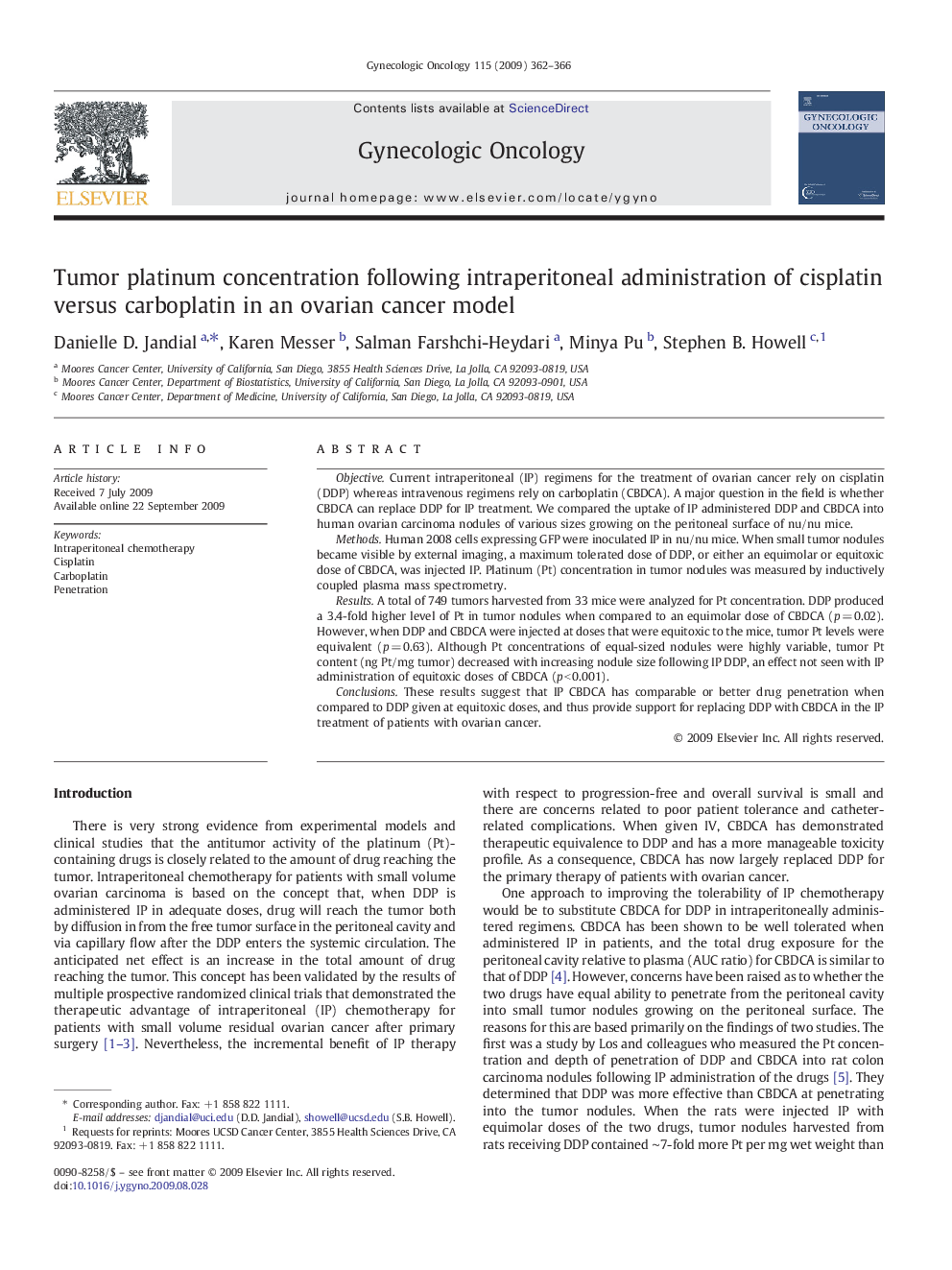| Article ID | Journal | Published Year | Pages | File Type |
|---|---|---|---|---|
| 3943244 | Gynecologic Oncology | 2009 | 5 Pages |
ObjectiveCurrent intraperitoneal (IP) regimens for the treatment of ovarian cancer rely on cisplatin (DDP) whereas intravenous regimens rely on carboplatin (CBDCA). A major question in the field is whether CBDCA can replace DDP for IP treatment. We compared the uptake of IP administered DDP and CBDCA into human ovarian carcinoma nodules of various sizes growing on the peritoneal surface of nu/nu mice.MethodsHuman 2008 cells expressing GFP were inoculated IP in nu/nu mice. When small tumor nodules became visible by external imaging, a maximum tolerated dose of DDP, or either an equimolar or equitoxic dose of CBDCA, was injected IP. Platinum (Pt) concentration in tumor nodules was measured by inductively coupled plasma mass spectrometry.ResultsA total of 749 tumors harvested from 33 mice were analyzed for Pt concentration. DDP produced a 3.4-fold higher level of Pt in tumor nodules when compared to an equimolar dose of CBDCA (p = 0.02). However, when DDP and CBDCA were injected at doses that were equitoxic to the mice, tumor Pt levels were equivalent (p = 0.63). Although Pt concentrations of equal-sized nodules were highly variable, tumor Pt content (ng Pt/mg tumor) decreased with increasing nodule size following IP DDP, an effect not seen with IP administration of equitoxic doses of CBDCA (p < 0.001).ConclusionsThese results suggest that IP CBDCA has comparable or better drug penetration when compared to DDP given at equitoxic doses, and thus provide support for replacing DDP with CBDCA in the IP treatment of patients with ovarian cancer.
